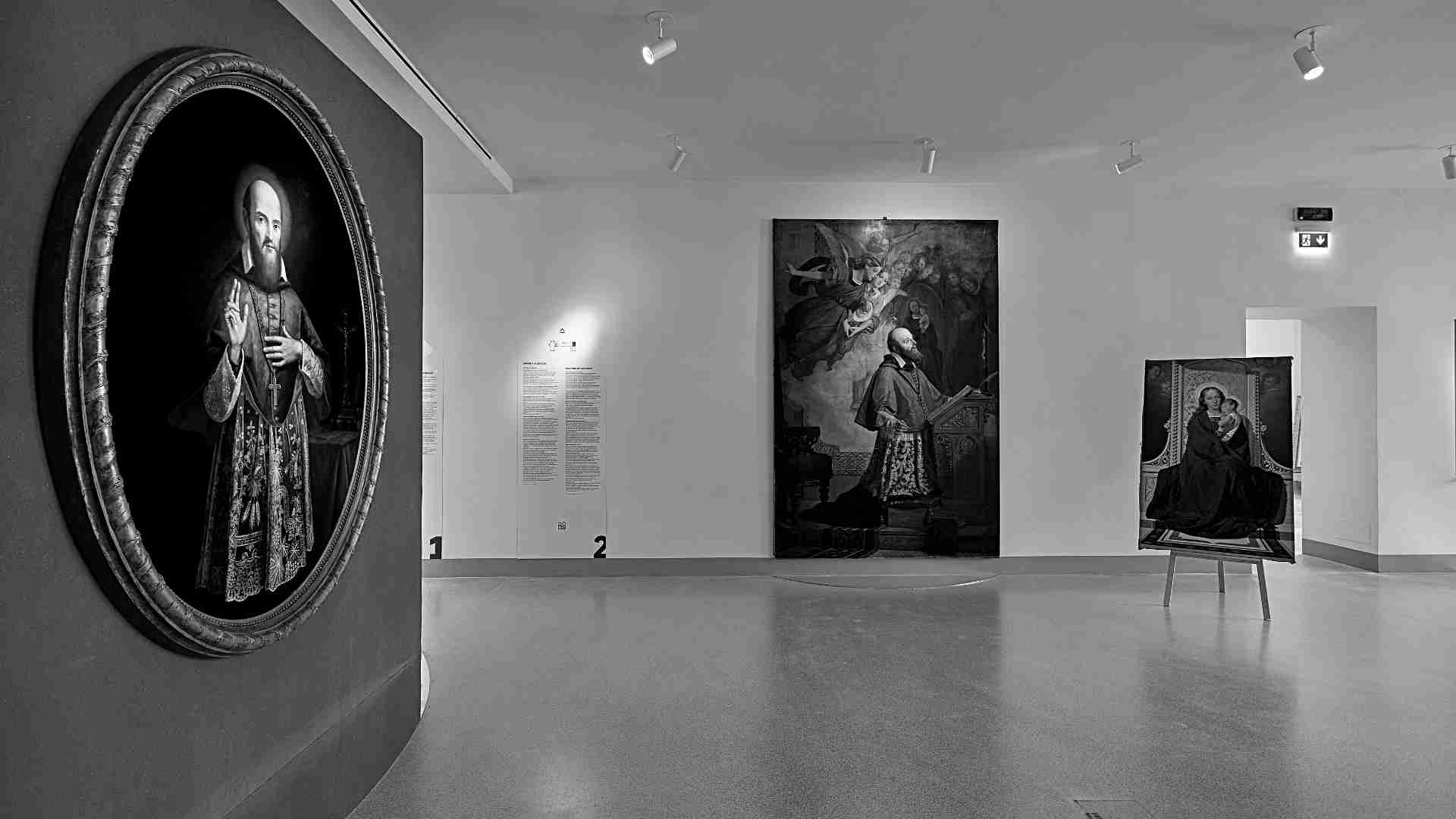The tour of the first floor of the Don Bosco House Museum begins with the architectural development of the Valdocco district from its origins to the present day. There are five models that describe the evolution from 1846, with the arrival of Don Bosco: the first represents Casa Pinardi with the access path from the ancient country road via della Giardiniera; the second presents the church of San Francesco di Sales (1852) and the evolution of the complex of the first oratory with the current bedrooms. In the third model we find the complex of buildings dominated by the Basilica (1863-’68, with the annexation of the Filippi House and, on the axis of the primitive via della Giardiniera. The new construction of the printing house (1861); finally the school building at Eastern limit of the property, built in 1863. The fourth model shows the current situation of the entire complex and its courtyards. On the walls we find the original sketches made for the publication of the text “Don Bosco’s Oratory” by F. Giraudi, fundamental for understanding the complex architectural and building development.
The room continues with the exhibition of works of art created by artists linked, for various reasons, to Don Bosco and the original Oratory, as well as the Turin pictorial season of the second half of the nineteenth century. Here are located the oval with St. Francis de Sales, placed by Don Bosco in the apse of the church of the same name since 1852 and probably a gift from the Marquise of Barolo; a large painting depicting St. John the Baptist, perhaps one of the lottery paintings, linked to the painter Carlo Tomatis and placed in the primitive choir of the Basilica since 1869.
By Tommaso Lorenzone (1824-1902) it is the sketch of the altarpiece of the main altar of the Basilica; by Giuseppe Rollini is the large canvas of the Immaculate Conception, painted for the church of San Giovanni Evangelista, of which the sketch is also exhibited, donated to Don A. Sala, general treasurer of the Salesian Congregation from 1880 to 1895. Important place is occupied from the wooden model of the dome of the Basilica (G. Rollini): it allows you to closely observe the episodes narrated such as the Battle of Lepanto. The pictorial collection continues in the next room with the portraits of Don Bosco by E. Reffo (1909), G. Rollini (1888), P. Gaidano (1889).

In the next room the biographical profiles of some of Don Bosco’s first collaborators are exhibited: Saint Joseph Cafasso, Don Giulio Barberis, the theologian G.B. Borel, Don G.B. Lemoyne. They helped the ‘Saint of the young’ in the origins and the first consolidation of the Valdocco oratory, especially from a pedagogical and intellectual point of view.
The first table of the General Council is located in the exhibition space, formerly a table in the library of Casa Pinardi since the mid-nineteenth century. The bookcase-furniture belonged to Don Michele Rua: he placed this wardrobe in Don Bosco’s room when he went to live there when the saint died. Placed here, this furniture is intended to testify to the faithful care of Don Bosco’s memory. Interesting liturgical objects accompany the exhibition dedicated to Cafasso, Barberis, Borel, Lemoyne, such as the monstrance donated for the church of St. Francis de Sales, preaching notes, an original copy of the Vademecum.
Continuing with the visit, there are three rooms intended for Don Paolo Albera, Don Michele Rua, Cardinal Cagliero. A further room sees the development of the figure of Don Bosco-editor.
In each room there are some objects that belonged to them as well as portraits that capture him in their characteristic features.



FOLLOW US.
Facebook
Instagram
Youtube
Vimeo
Linkedin
Pinterest
Subscribe to our newsletter.
Receive updates on new exhibits, conferences and events at Casa Don Bosco Museum.